You’ll discover that transforming your blank walls with strategic plant arrangements can dramatically enhance your living space. From living walls featuring delicate air plants to sophisticated preserved moss displays, these nine design approaches offer practical solutions for any room size or style preference. Whether you’re seeking low-maintenance options or statement pieces, these innovative plant wall techniques combine form and function to create depth, texture, and visual interest that’ll make your space uniquely yours.
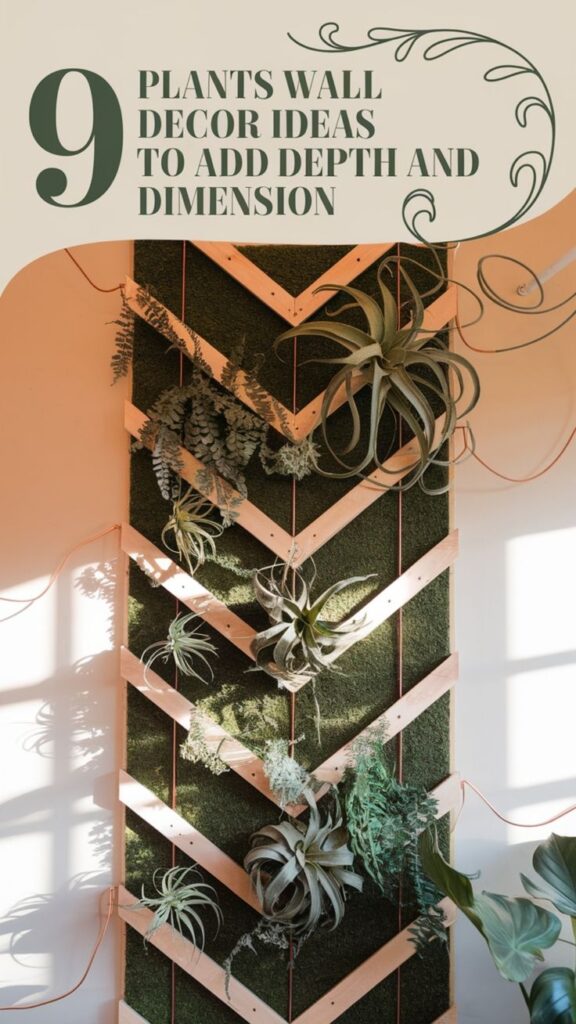
Contents
- 1 Create a Living Wall With Air Plants
- 2 Design a Vertical Garden Using Preserved Moss
- 3 Install Floating Plant Shelves
- 4 Mix Real and Faux Plants for Low-Maintenance Impact
- 5 Frame Individual Plants as Botanical Art
- 6 Build a Geometric Plant Grid System
- 7 Arrange Hanging Planters in Clusters
- 8 Craft a Succulent Wall Display
- 9 Incorporate Plant Wall Lighting Features
Create a Living Wall With Air Plants
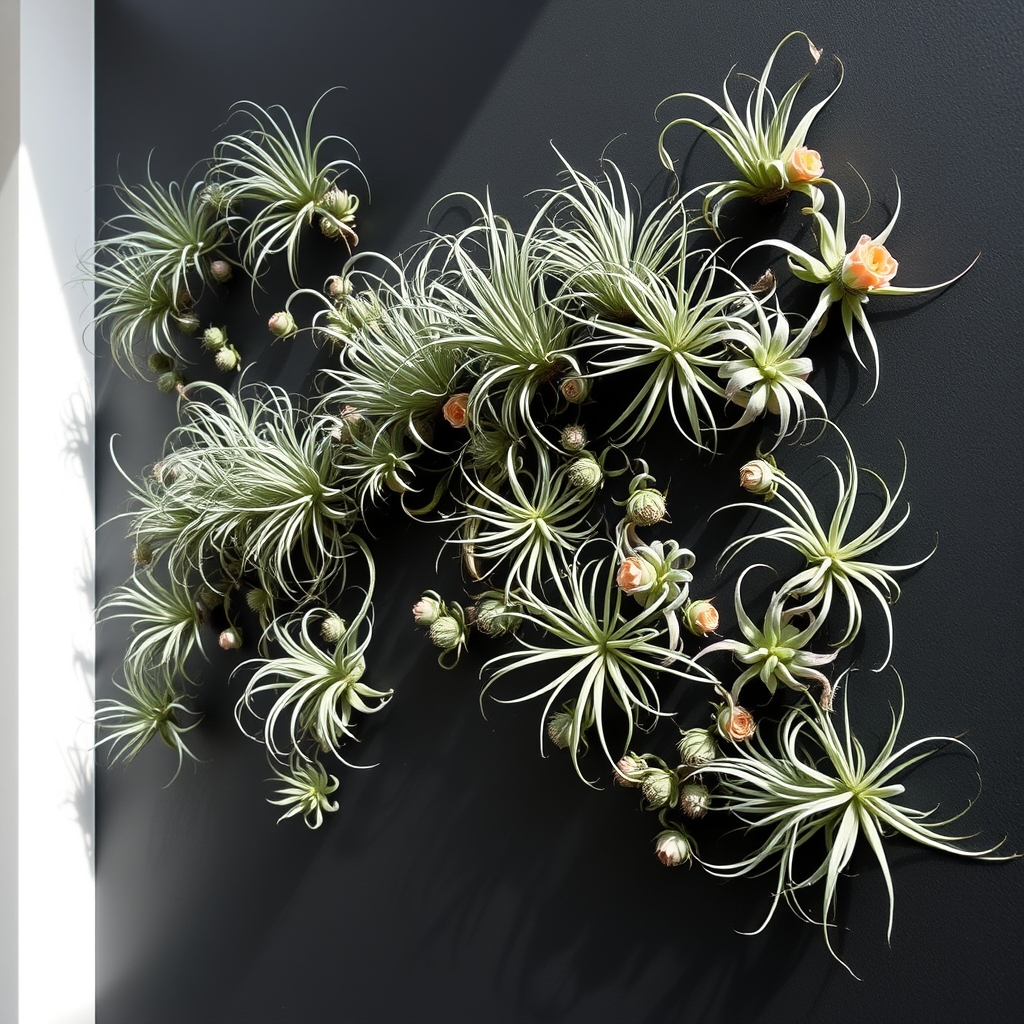
Living walls with air plants transform vertical spaces into striking natural displays. Air plants (Tillandsia) are mounted directly onto walls using wire, glue, or specially designed holders, creating a three-dimensional garden effect.
These plants don’t require soil to grow, absorbing nutrients and moisture through their leaves, making them ideal for vertical installations. The plants can be arranged in patterns, clusters, or artistic designs, with varying sizes and species providing texture and visual interest.
Colors range from silvery-green to pink-tinged varieties, and when in bloom, they produce vibrant flowers. This low-maintenance wall feature requires only occasional misting and good air circulation to thrive.
Design a Vertical Garden Using Preserved Moss
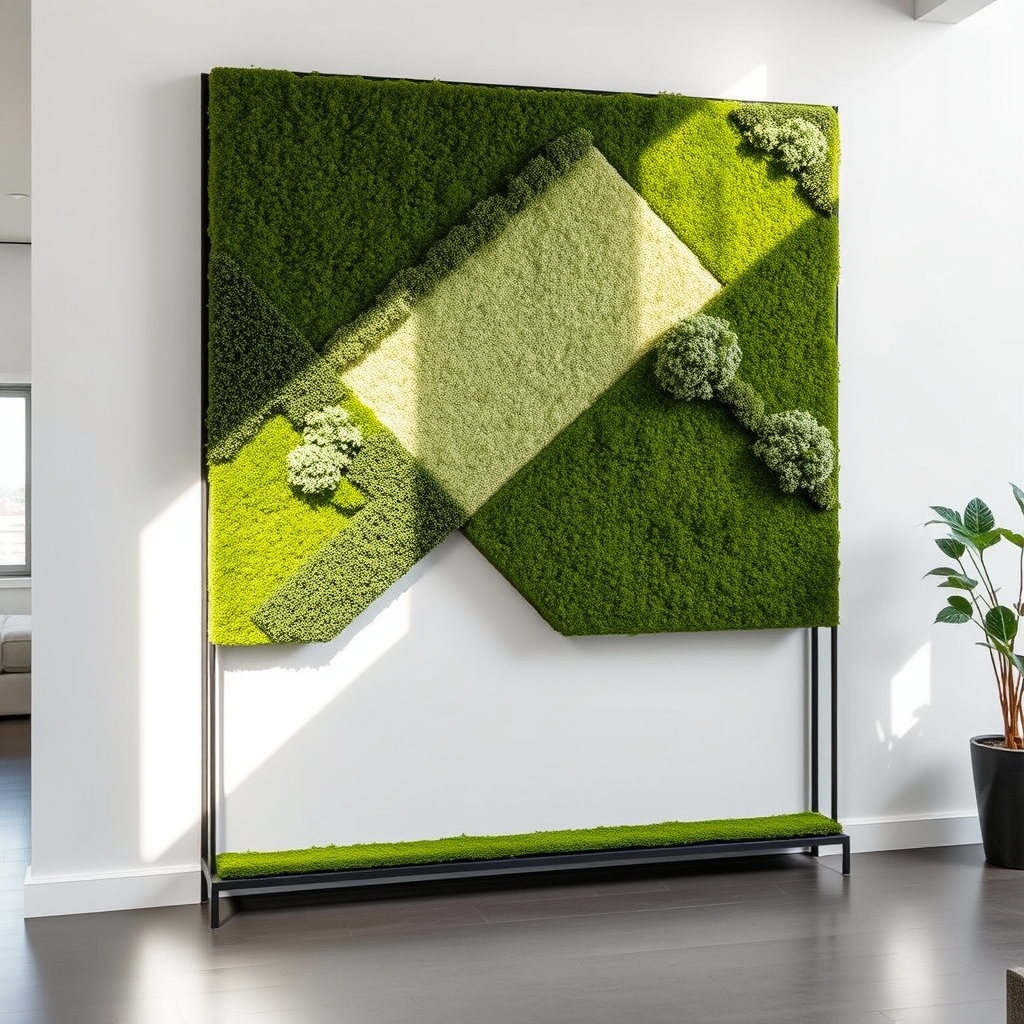
A vertical garden using preserved moss creates a striking, maintenance-free living wall that brings natural texture and verdant beauty to indoor spaces.
Preserved moss, which has been specially treated to maintain its vibrant green appearance without watering or sunlight, is arranged in artistic patterns on a vertical surface, often incorporating different moss varieties like sheet moss, reindeer moss, and pole moss.
The unique feature of this design lies in its completely self-sustaining nature – the moss requires no water, soil, or light while retaining its fresh, natural look for years.
This style of wall decor can be customized into various shapes, logos, or abstract designs, and often includes wooden frames or metal backings to create a polished, professional appearance.
Install Floating Plant Shelves
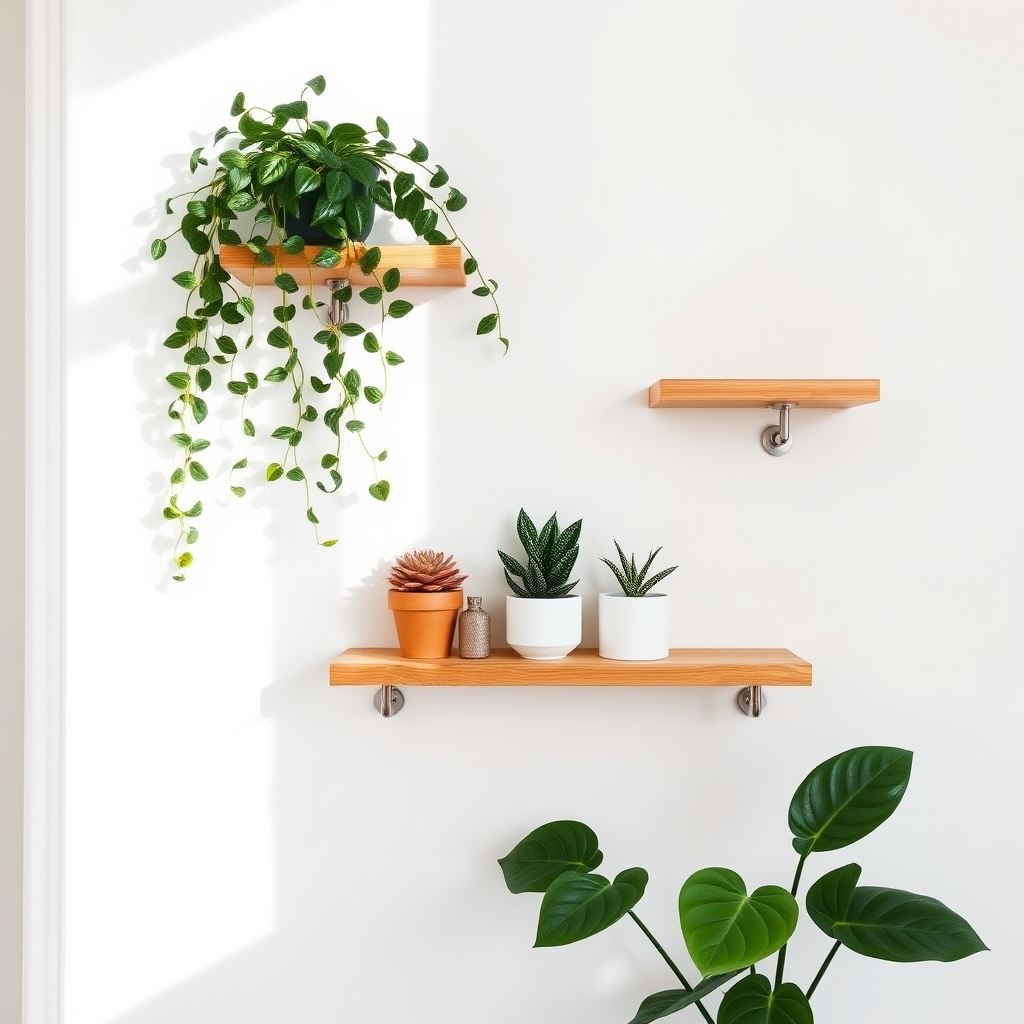
Floating plant shelves create a modern, minimalist display solution for indoor plants by appearing to emerge directly from the wall without visible brackets or supports.
These sleek shelves come in various materials like wood, metal, or acrylic and can be arranged in different configurations – horizontally, vertically, or staggered.
The hidden mounting system gives the illusion that plants are suspended in mid-air, making them an attractive architectural element while maximizing vertical space.
Ideal for displaying trailing plants, small potted specimens, or a curated collection of succulents, floating shelves add depth and visual interest to any room while keeping plants safely elevated.
Mix Real and Faux Plants for Low-Maintenance Impact
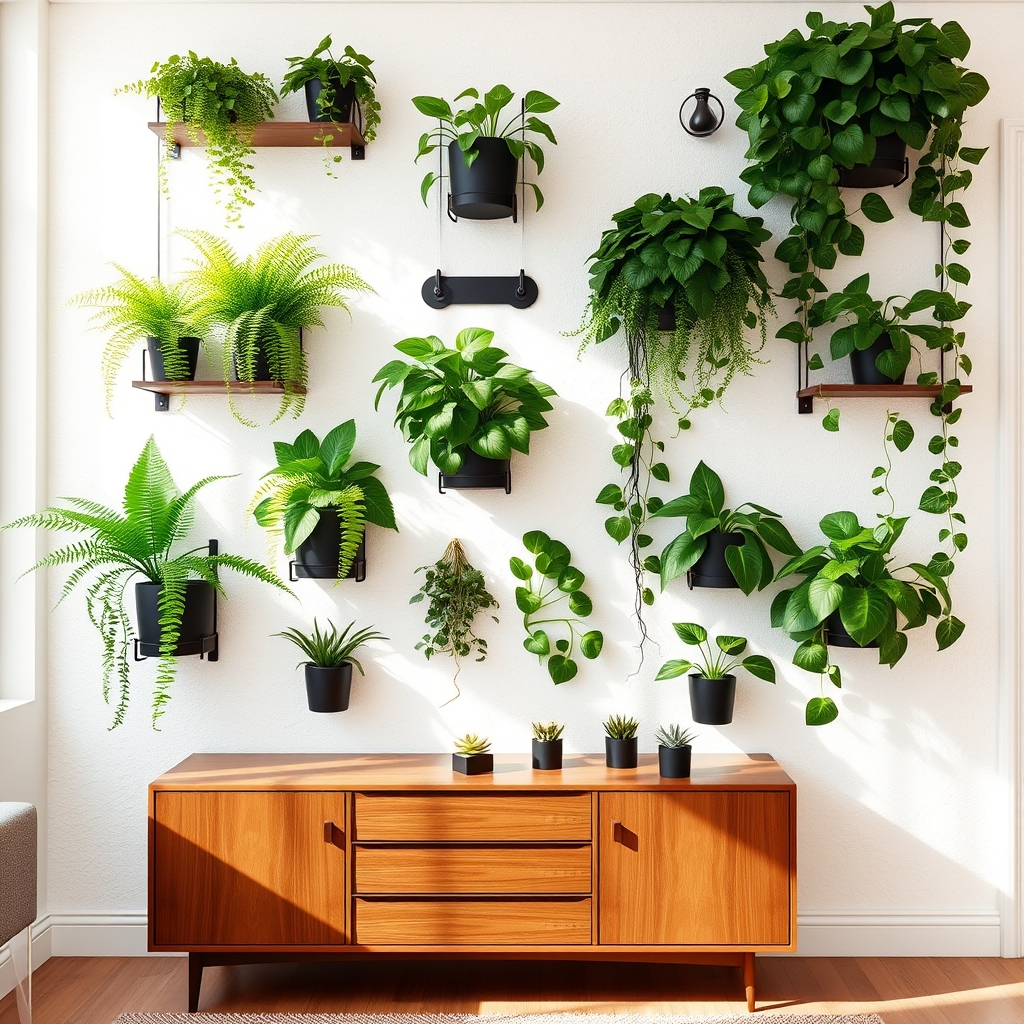
Mixing real and faux plants creates a lush, visually appealing wall display while reducing maintenance demands.
This approach combines authentic live plants with high-quality artificial ones, strategically placing low-maintenance or hardy live plants at accessible heights while using realistic faux plants in harder-to-reach areas.
The arrangement typically features varying textures, sizes, and shades of green, with artificial plants filling gaps and providing consistent fullness year-round.
Key benefits include reduced watering needs, fewer concerns about light requirements, and the ability to maintain a fresh, vibrant look without total dependency on live plant care.
Artificial plants can be positioned in spots where real plants might struggle, such as dark corners or high shelves, while living plants add authentic touches and natural elements to the overall display.
Frame Individual Plants as Botanical Art
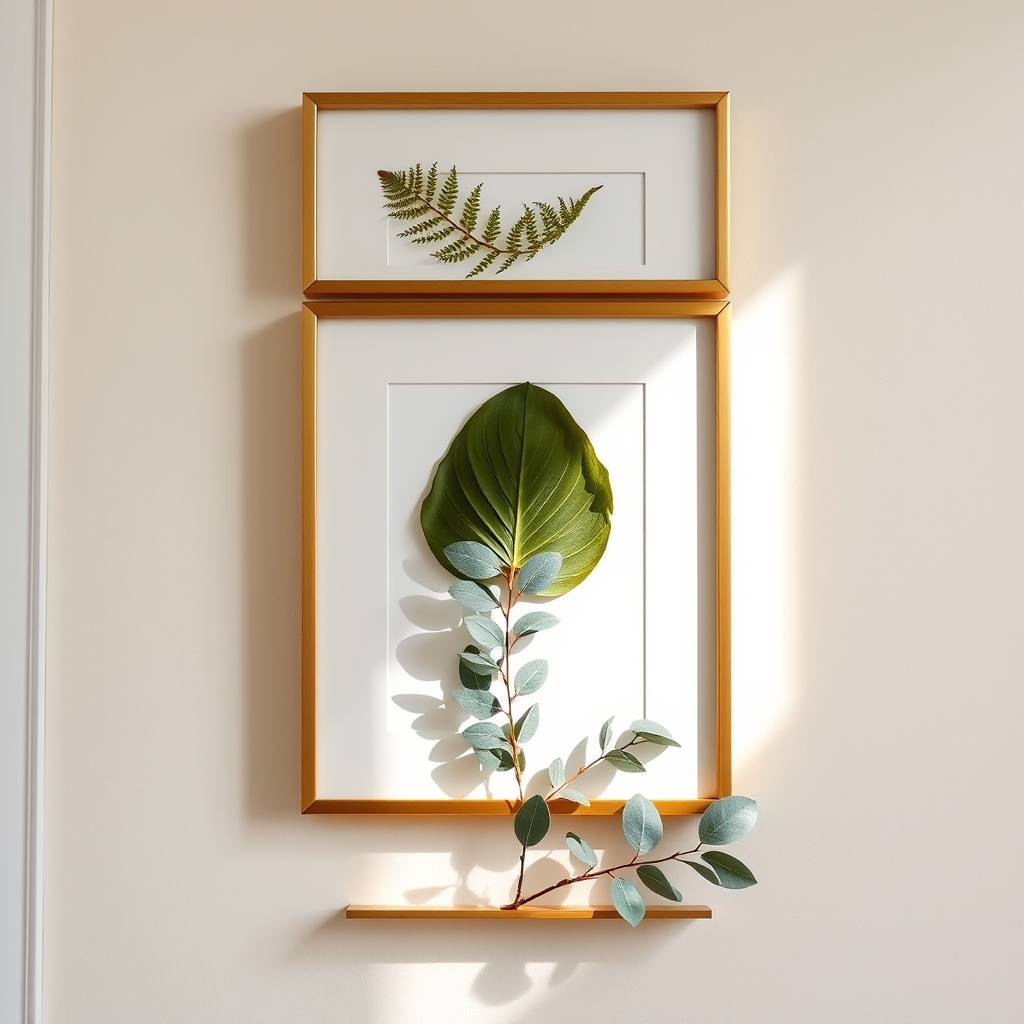
Framing individual plants as botanical art transforms preserved plant specimens or high-quality prints into sophisticated wall decor.
Single leaves, flowers, or fronds are carefully pressed and mounted within glass frames, often using white matting to create visual contrast. The frames can be vintage-style gold, minimalist black, or natural wood, arranged individually or in coordinated groupings.
This style mimics traditional botanical illustrations found in scientific journals while serving as modern, nature-inspired artwork. Each frame showcases the intricate details, veining patterns, and natural colors of individual plant specimens, creating an elegant herbarium effect on walls.
Build a Geometric Plant Grid System
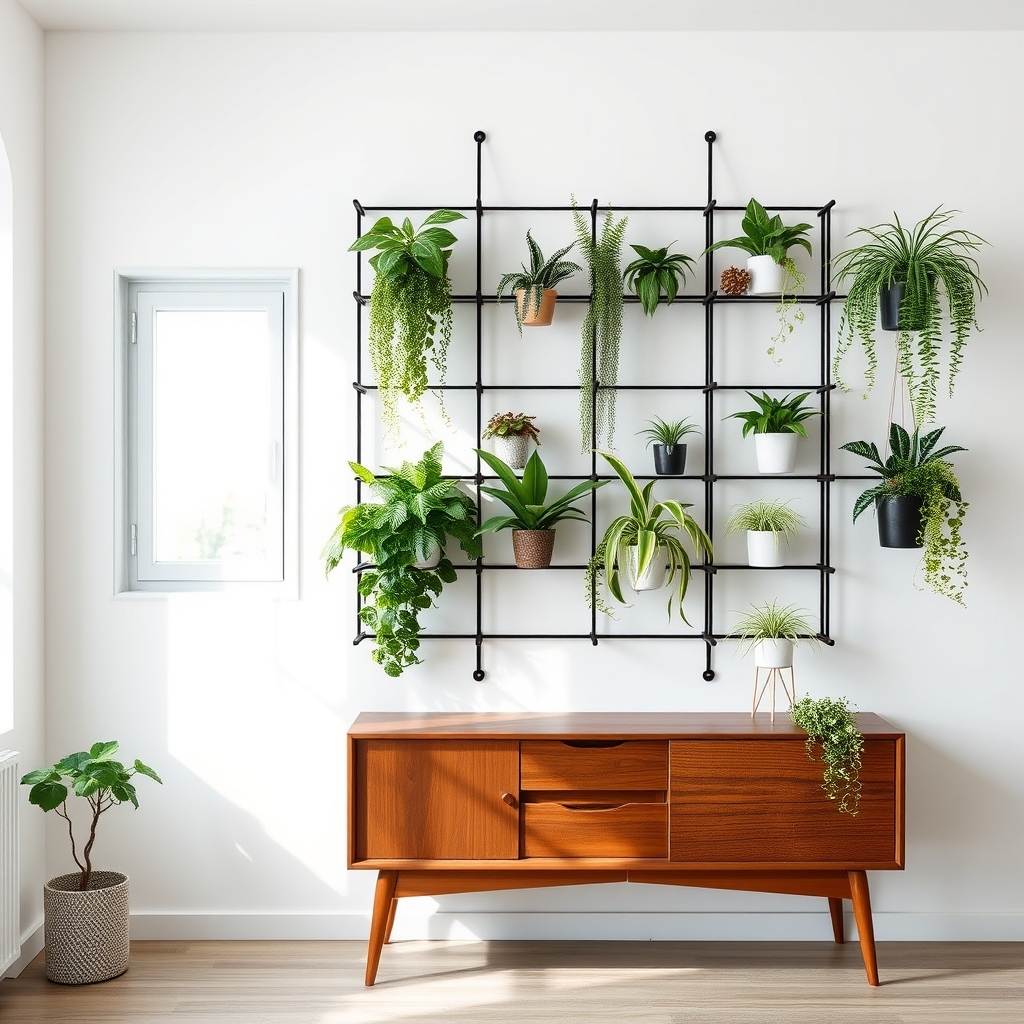
A geometric plant grid system is a modular wall-mounted arrangement that combines metal or wooden frames arranged in a grid pattern to display plants.
The structure typically features multiple square or rectangular sections where plants can be installed individually, creating a living work of art.
Plants are mounted within each grid compartment using hanging planters, air plant holders, or integrated shelving.
This systematic approach allows for easy customization, plant rotation, and maintains visual organization while maximizing vertical growing space.
The grid’s clean lines and repetitive pattern offer a contemporary aesthetic that contrasts beautifully with the organic shapes of the plants.
Arrange Hanging Planters in Clusters
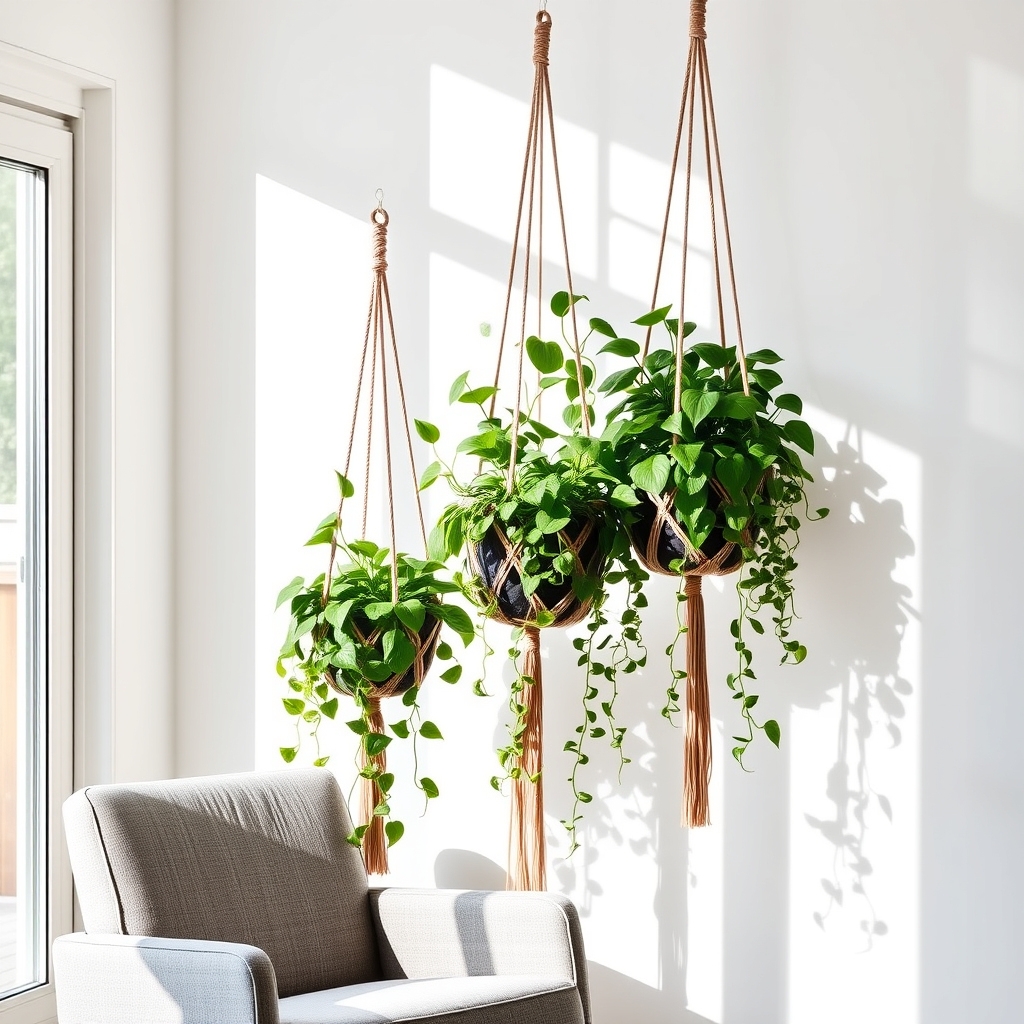
Arranging hanging planters in clusters creates a dynamic vertical garden display that adds depth and visual interest to walls. Multiple planters suspended at varying heights form an eye-catching grouping, with plants cascading at different levels.
The clusters can be created using matching or mixed planter styles, featuring combinations of macramé holders, ceramic pots, or metal containers. This arrangement style works particularly well in corners or along wider wall sections, where 3-5 planters grouped together create a focal point.
The layered effect maximizes vertical space while allowing trailing plants to naturally overlap and interact, producing a lush, organic appearance. Strategic spacing between planters ensures each plant receives adequate light and air circulation while maintaining the cohesive cluster aesthetic.
Craft a Succulent Wall Display
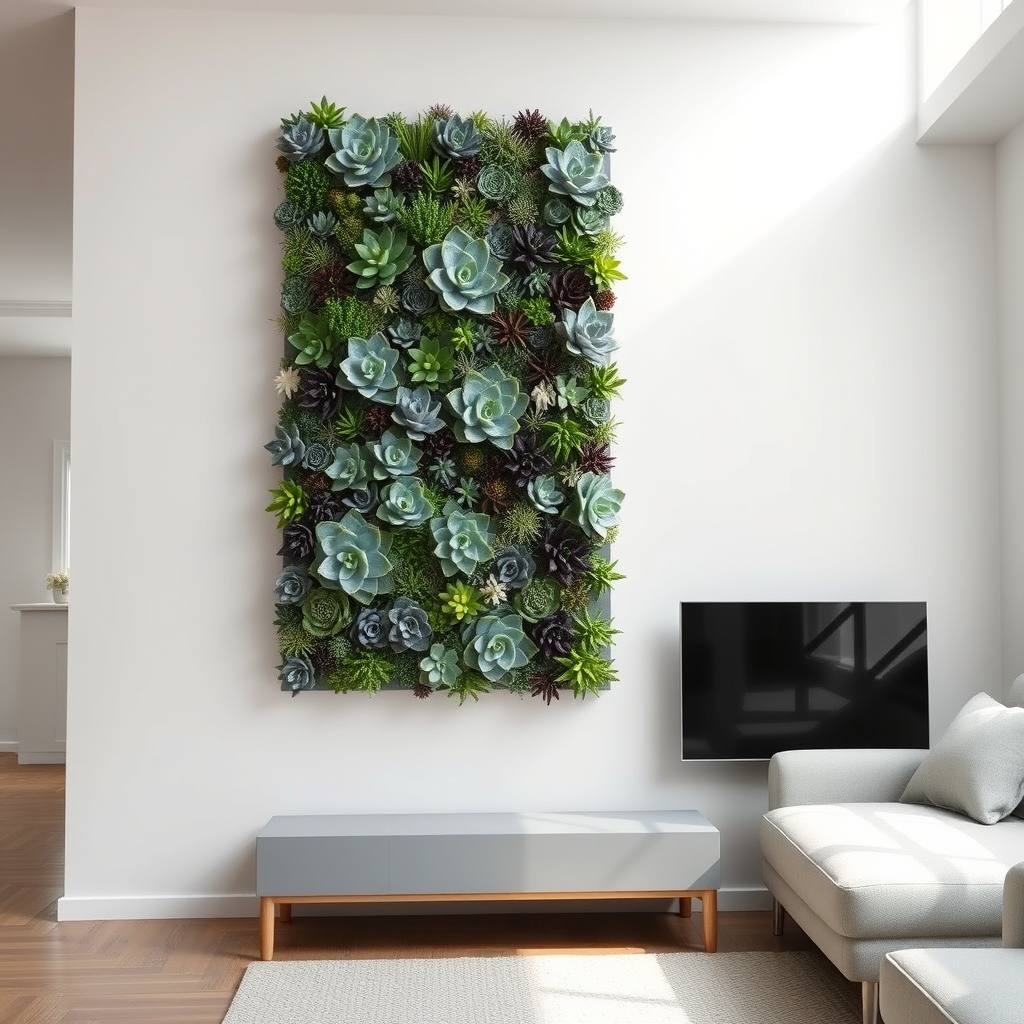
A succulent wall display transforms living plants into three-dimensional artwork by arranging various succulent species in a vertical garden format.
The display typically features a mix of different-sized succulents with diverse colors, shapes, and textures mounted on a hanging frame or panel. Succulents are secured in individual pockets or cells filled with soil, allowing them to grow vertically while creating a mosaic-like pattern.
This living wall art requires minimal water and maintenance due to succulents’ drought-resistant nature, making it an ideal choice for indoor spaces.
The display can be customized in size and pattern, from small framed arrangements to large-scale installations that cover entire walls.
Incorporate Plant Wall Lighting Features
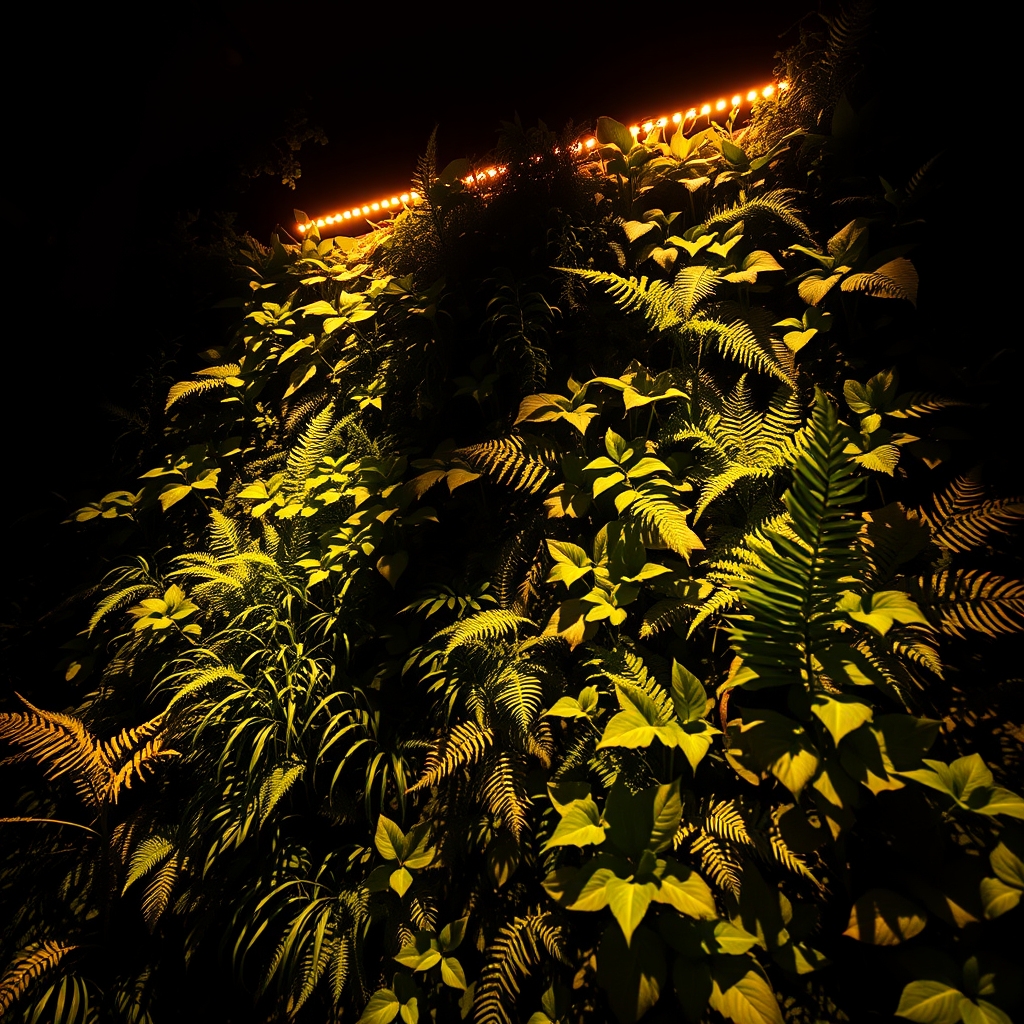
Plant wall lighting features enhance living walls through strategic illumination, creating dramatic shadows and highlighting the natural textures of foliage.
These installations typically combine LED strips, spotlights, or sconces positioned to cast light upward or downward along the plant wall.
Common lighting options include:
- Hidden strip lighting along shelving edges
- Adjustable track lighting systems
- Solar-powered outdoor fixtures for exterior walls
- Color-changing LED systems for ambiance
- Motion-sensor lights for energy efficiency
The lighting serves both practical and aesthetic purposes – illuminating plants for proper growth while creating depth and visual interest, especially during evening hours.
Well-placed fixtures can emphasize specific plants, create layered lighting effects, and transform the plant wall into a striking focal point.
Installation typically requires professional electrical work to ensure proper wiring and weatherproofing for outdoor applications.
